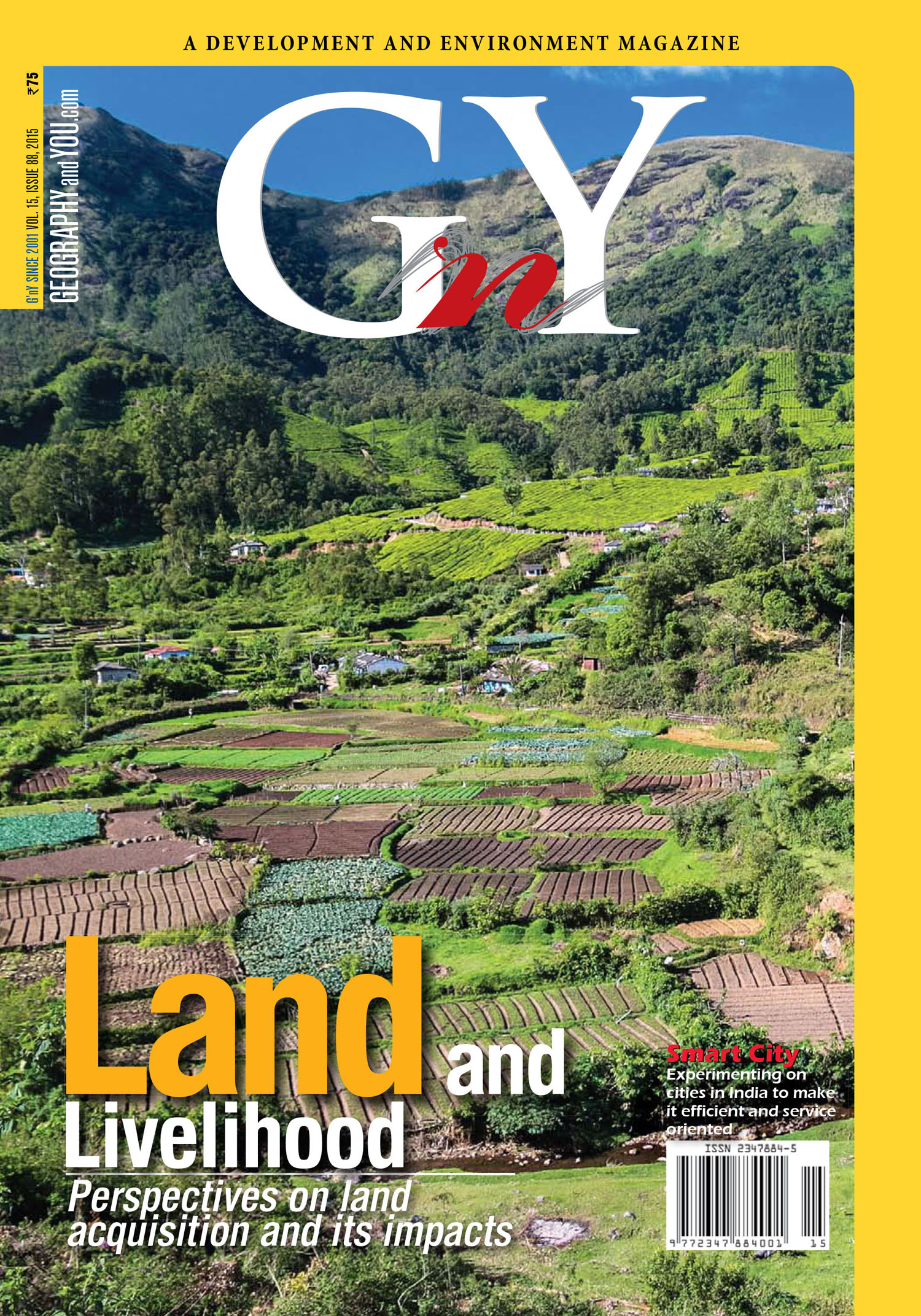
Expert Panel

Vice Chancellor, MG Kashi Vidyapeeth, Varanasi

Koteswaram Professor, MoES, Air Vice Marshal (Retd) and Former DG, IMD

Deputy Director General, Fisheries, Indian Council of Agricultural Research, New Delhi

Professor, Centre for the Study of Regional Development, Jawaharlal Nehru University, New Delhi

Professor, Centre for the Study of Regional Development, Jawaharlal Nehru University, New Delhi
Inside this issue
Backgrounder
The Right to Fair Compensation and Transparency LARR Act introduced a mandatory social impact assessment to correct the historical injustices. The ordinance by the current government overturns this clause.
Cover story
The New Land Act of 2013 was meant to remove the historic injustice perpetrated on land owners and sought to incorporate those dependent on agricultural land for livelihood. However, proposed amendments to the New Act will undermine its major clauses, and fail to achieve the purpose it was aimed for.
Land perspectives
Lessons learnt from large scale acquisition of land for planned development of Delhi under the Land Acquisition Act of 1894 have gone on to frame the new Land Acquisition Act of 2013. Yet, some major concerns remain unaddressed to this day.
Agricultural land converted to non-agricultural uses is often understood as ‘development’. While high growth, rich states have managed to hold on, the low growth poorer states have lost significant amounts of land under plough causing distress to their agricultural communities.
The marginal farmer is today pitted against the hegemony of the state and its collaborator—the private developer, even as the developing economy fails to provide alternative livelihoods to those in search of non-farm employment.
Tribes are marginalised to make way for the well-being of the economically and politically stronger. However, the neo-liberal regime has ensured that these communities are pushed into near obliteration as their livelihoods are sacrificed for the ‘national interest’.
The position of women in north and south India is inherently linked to the terrain. Marriage rituals provide a clue to the demands made on the land articulated through, societal norms.
Notwithstanding existing legislation enacted by the West Bengal government to protect wetlands and water-bodies, wetlands in the State continue to be grabbed by realtors and industry.
Wind energy is widely celebrated as green energy. However, wind farms can have far reaching environmental and social consequences.
Careers options related to land use, planning and development are enormous. Although a science background may be required in most, there are several courses that do not demand such a background. CEPT University, Ahmedabad; and School of Planning and Architecture, Delhi are among those that accept students from a wide variety of backgrounds.
The concept of smart cities is gaining ground with the government’s resolve to set up 100 new smart cities all over the country. To be smart, each such city should be able to deliver basic and infrastructure services quickly and efficiently, while providing safety and security to its residents.
In brief
If we were to believe that land drives livelihoods, the Right to Fair Compensation and Transparency in Land Acquisition, Rehabilitation and Resettlement Act, 2013 (Land Act 2013) would be pivotal to our existence. This new Land Act 2013, has put into perspective historical injustices and several art
One Step Forward, Two Steps Backward: With increasing urbanisation, mining, industrialisation and development of infrastructure such as roads, multipurpose river valley projects, airports and ‘special economic zones’, agricultural and forested areas among others are continuously being acquired b

